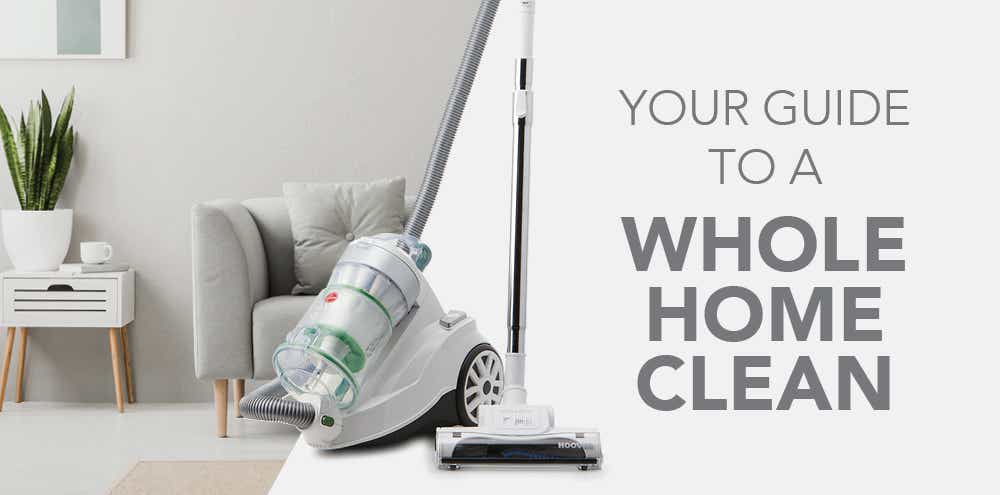When was the last time you cleaned your mattress? How about your pillows? Sure, you might wash your sheets every week, but that’s not enough to keep your bed clean and hygienic.
Your mattress and pillows absorb all the dead skin flakes, sweat and oil your body produces every night. They’re also home to dust mites, bacteria and fungi, which can be harmful to your health.
Experts tell us we should deep clean our mattresses once or twice every year, and clean our pillows every three to four months. This will keep them in top condition and ensure they last their expected lifespan. Not only does deep cleaning remove odours from your bedding and protect your health, but it can also help you sleep more soundly. Cleaning reduces the number of allergens present in your home so you can breathe cleaner air and sleep better.
Deep cleaning might sound like a daunting task, but it doesn’t have to be. We’ll show you the best way to clean mattresses and pillows so you can start sleeping better today.
SIGNS YOUR MATTRESS NEEDS A CLEAN
If your mattress has noticeable spots or stains or a funny smell, it’s a sign that it’s long overdue for a clean. Additionally, if you’ve been experiencing heightened allergy symptoms such as itchy eyes, coughing or sneezing and washing your sheets hasn’t helped the situation, a dirty mattress may be the cause. Remember: it won’t always be obvious if your mattress needs a clean, so if it’s been a year (or more!), consider it time now.
If cleaning fails to remove stains or odours, or you discover a build-up of mould, your mattress is due to be replaced.
MATERIALS YOU’LL NEED
You don’t need much to deep clean your mattress. In fact, most of these supplies are likely sitting in your cleaning cupboard already.
- A vacuum cleaner with an upholstery attachment
- Baking soda
- Your choice of essential oils
- Antibacterial spray
If you’re targeting a particular stain, it’s important to remember that stains can be classified as protein-, tannin-, or grease-based, and each kind requires different cleaning methods to remove. Try to tend to any stain as soon as possible before it has a chance to soak in.


A STEP-BY-STEP GUIDE TO CLEANING YOUR MATTRESS
Before starting, make sure the room is well-ventilated with the windows and doors all open. Check that the air in the room isn’t too humid or moist, as this can cause mould or mildew to grow.
STRIP BEDDING
Remove all pillows, blankets, sheets and mattress protectors off the bed until the mattress is completely bare. It’s a good idea to wash everything and remake the bed with fresh bedding once the mattress has been cleaned.
VACUUM
To remove any lingering dust and debris, vacuum your mattress completely. A power head vacuum cleaner will achieve the best results as they’re designed to effectively reach deeply embedded dust. Protect your mattress by using an upholstery brush and work systematically up and down until you’ve vacuumed every inch – including the underside.
DEODORISE
Sprinkle baking soda liberally across the entire mattress surface and leave for at least one hour. To leave a pleasant lingering scent for the next few nights, mix in a few drops of essential oils with the baking soda prior to application. Oils such as rosemary, lavender, or eucalyptus will create a calming, gently fragrant bed to sleep in.
VACUUM AGAIN
Once you’ve let the baking soda sit for a decent amount of time, vacuum the mattress again (using the upholstery tool). Work methodically across the surface to ensure no baking soda is left behind.
DISINFECT
Remove bacteria from your mattress using a high-quality antibacterial cleaner. Be sure to choose a formula that doesn’t contain bleach as it will harm the mattress fibres. Follow the manufacturer’s instructions to mix the solution with the correct amount of water and place it in a spray bottle. Spray the solution lightly across the entire mattress including the sides.
WIPE DOWN
Dip a clean cloth in warm water, wring it out thoroughly, then use it to wipe down the mattress after it’s been sprayed. It’s important to use as little water as possible as any excess moisture can lead to mould build-up. Ensure the mattress is completely dry before remaking the bed.
PREVENTION
If you aren’t already using one, a fully-encased mattress protector will help protect your mattress from future dirt and dust, keeping it cleaner for longer. There are many different types of mattress protectors available, including hypoallergenic designs that prevent dust mites and waterproof designs that protect against moisture.


A GUIDE TO CLEANING DIFFERENT KINDS OF PILLOWS
Compliment your new mattress cleaning routine with freshly washed pillows for a complete bed refresh. Always read your pillow’s care tag before you start, as different materials and fillings will require a different approach to cleaning. Some pillows can handle your home washing machine, while others will need to be dry cleaned or hand washed to prevent damage.
WASHING DOWN, FEATHER AND FIBREFILL PILLOWS
Most down and fibrefill pillows can be cleaned in your washing machine using a mild detergent. A machine without an agitator is your safest bet, but as long as you choose a gentle, relatively short cycle your pillows will be just fine. If your machine is big enough, wash two pillows at once to keep the load balanced and ensure a more effective clean.
WASHING FOAM AND LATEX PILLOWS
Memory foam and latex will break down in the washing machine, so it’s best to clean these pillows by hand. Use a vacuum with an upholstery attachment to remove any dust or debris, then spot clean with a damp cloth and mild detergent.
DRYING PILLOWS
It’s vital that you let your pillows dry completely before placing them back on your bed, as excess moisture will cause mould or mildew growth. If you have access to a dryer, leave them in for a good hour on moderate heat. Pop in some dryer balls or fresh tennis balls to stop the filling from clumping up as it dries. Use a no-heat air dry setting for down or feather pillows.
Alternatively, hang your pillows outside to air dry – or lay them flat if they’re made of foam. Whichever drying method you choose, ensure the pillows are completely dry all the way through before you bring them back to the bedroom.
PREVENTION
As well as your pillowcases, it’s worth investing in pillow protectors to keep dust and other nasty particles off your pillows. We also recommend fluffing your pillows every day to help maintain their shape and get rid of any dust that’s settled on them. Every month or so, hang your pillows outside to air out or run them through the dryer on a no-heat cycle.
Once you’ve completed the entire deep clean procedure, remake your bed with clean sheets. Enjoy healthier nights and deeper sleep in your ultra-fresh bed, free of all the nasties.
Alternatively, you can steam clean your mattress after vacuuming to kill dust mites and germs, and remove odours effectively.





